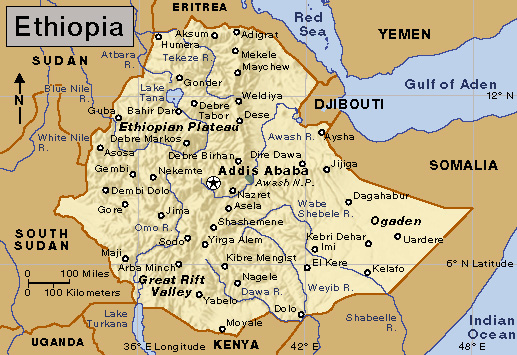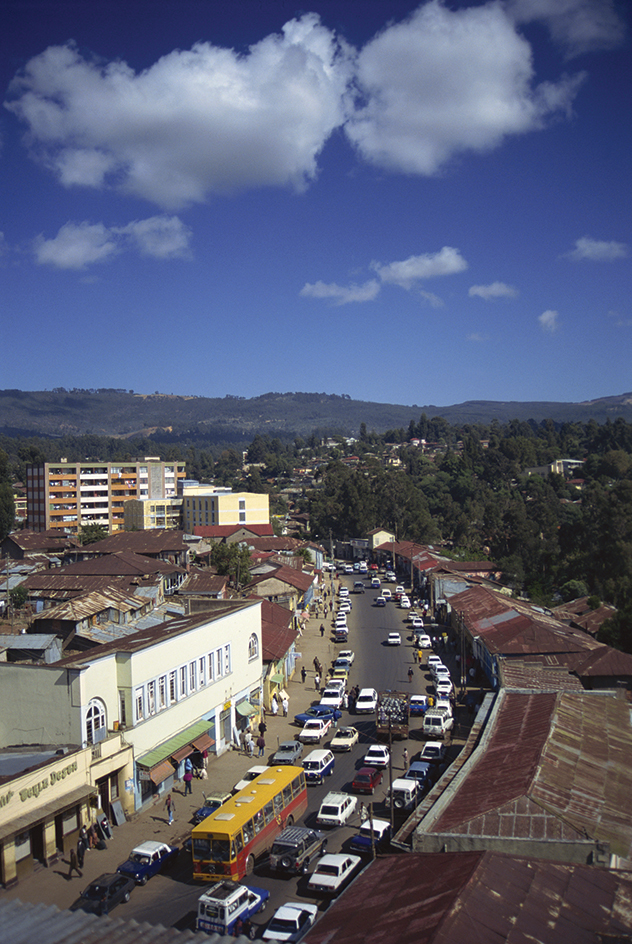Addis Ababa, << AD ihs AB uh buh >> (pop. 3,945,000), is the capital and largest city of Ethiopia. It is a leading city of Africa and the headquarters of important regional organizations. Addis Ababa lies in central Ethiopia.

Addis Ababa lies on the southern slopes of the Entoto Mountains. Deep ravines cut through the city. Many eucalyptus trees grow in and near Addis Ababa.

Ethiopia’s national government occupies the palace of a former emperor, Menelik II, in Addis Ababa. The Jubilee Palace, the residence of former Emperor Haile Selassie I, is in the city. The African Union (AU) and the United Nations Economic Commission for Africa have their headquarters in Addis Ababa. The National Theater, Addis Ababa University, and several museums are also in the city.
Homes of wealthy and poor people stand next to each other throughout Addis Ababa. The city’s housing ranges from high-rise apartment buildings and European-style homes to traditional African mud houses.
Addis Ababa is an important commercial center and has one of Africa’s largest open-air markets, the Mercato. The city’s products include cement, sugar, textiles, and tobacco. Addis Ababa has an international airport, and a railroad links the capital with Djibouti, a city located on the Gulf of Aden. A rapidly growing population and other factors have made unemployment a problem in Addis Ababa.
Addis Ababa was founded in 1887 by Menelik II, who was then king of Shawa Province. Menelik made Addis Ababa the capital of the province. He took the throne as emperor of Ethiopia in 1889, and Addis Ababa became the nation’s capital.
Until 1974, much of Addis Ababa’s land was owned by the emperor’s family, members of the nobility, and the Ethiopian Orthodox Church. That year, a revolution headed by Ethiopian military leaders overthrew Emperor Haile Selassie I. Most of the city’s land then came under government control.
